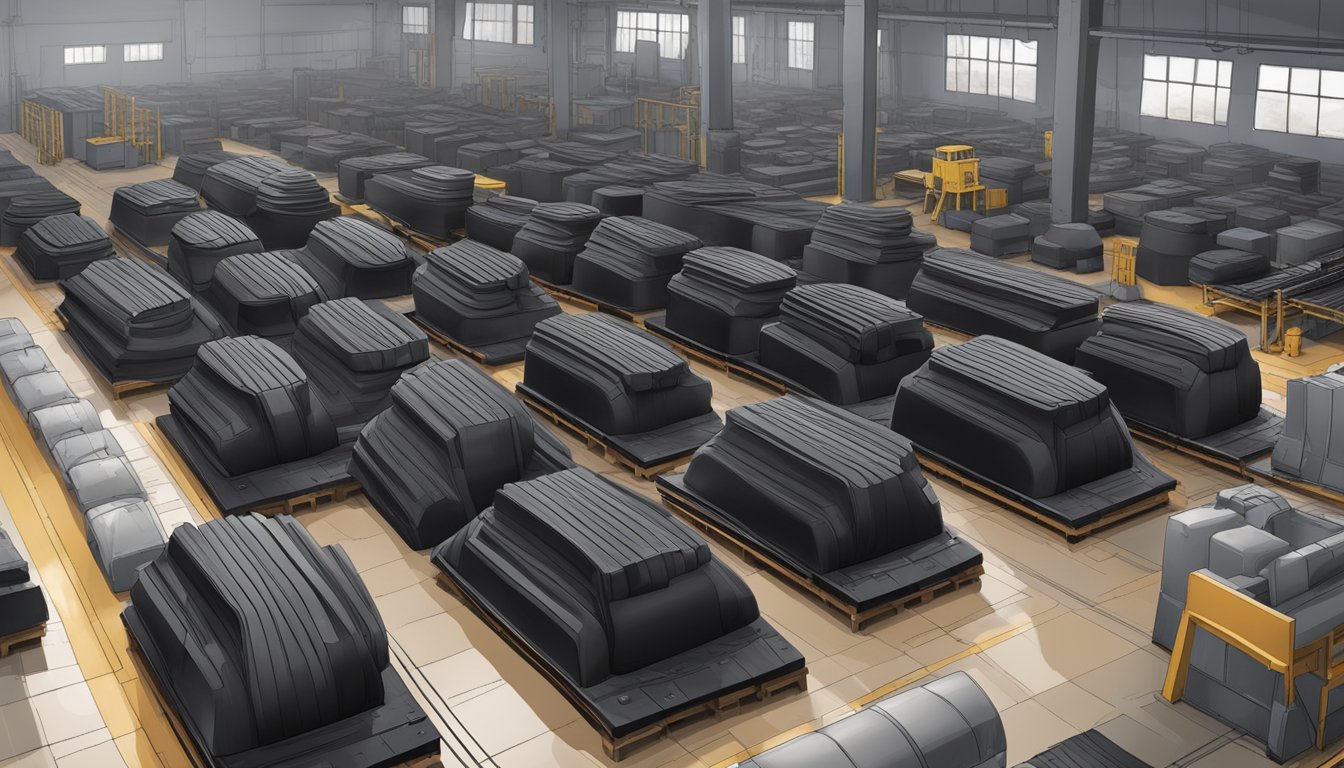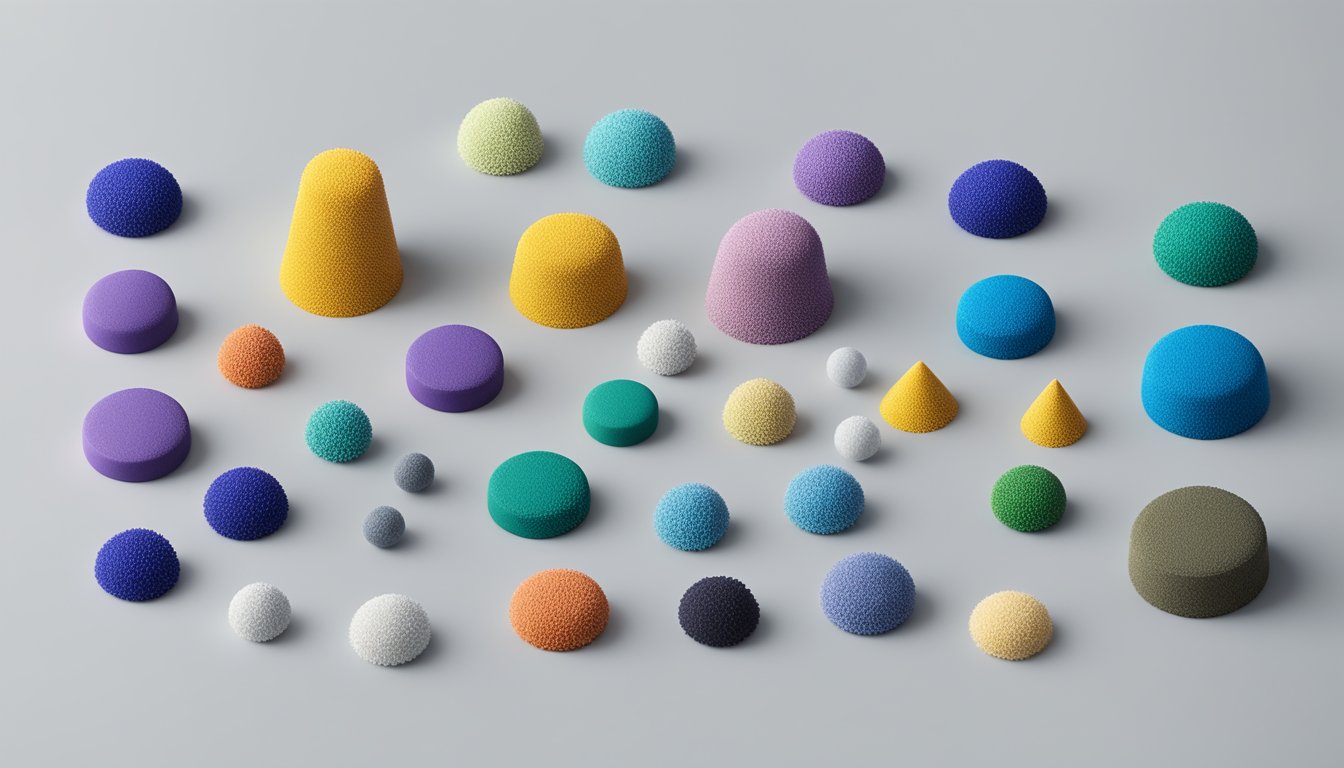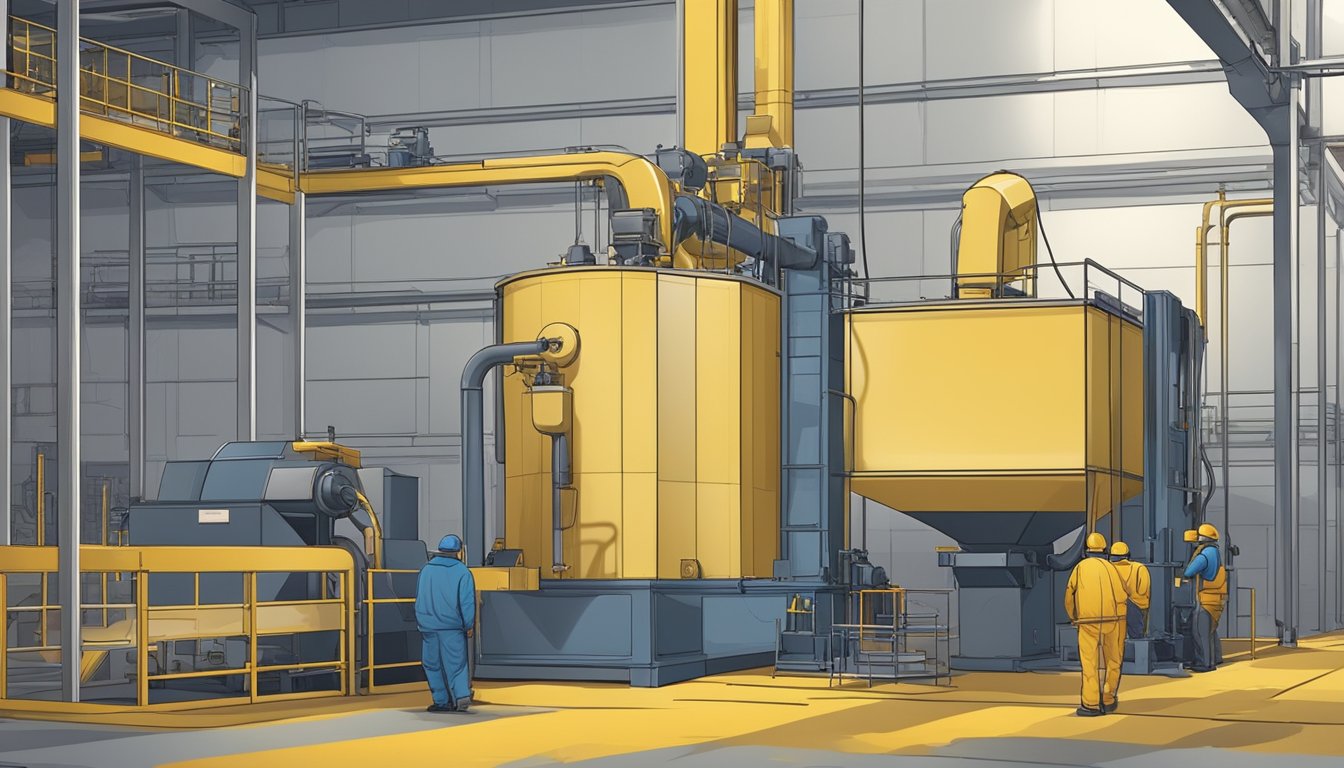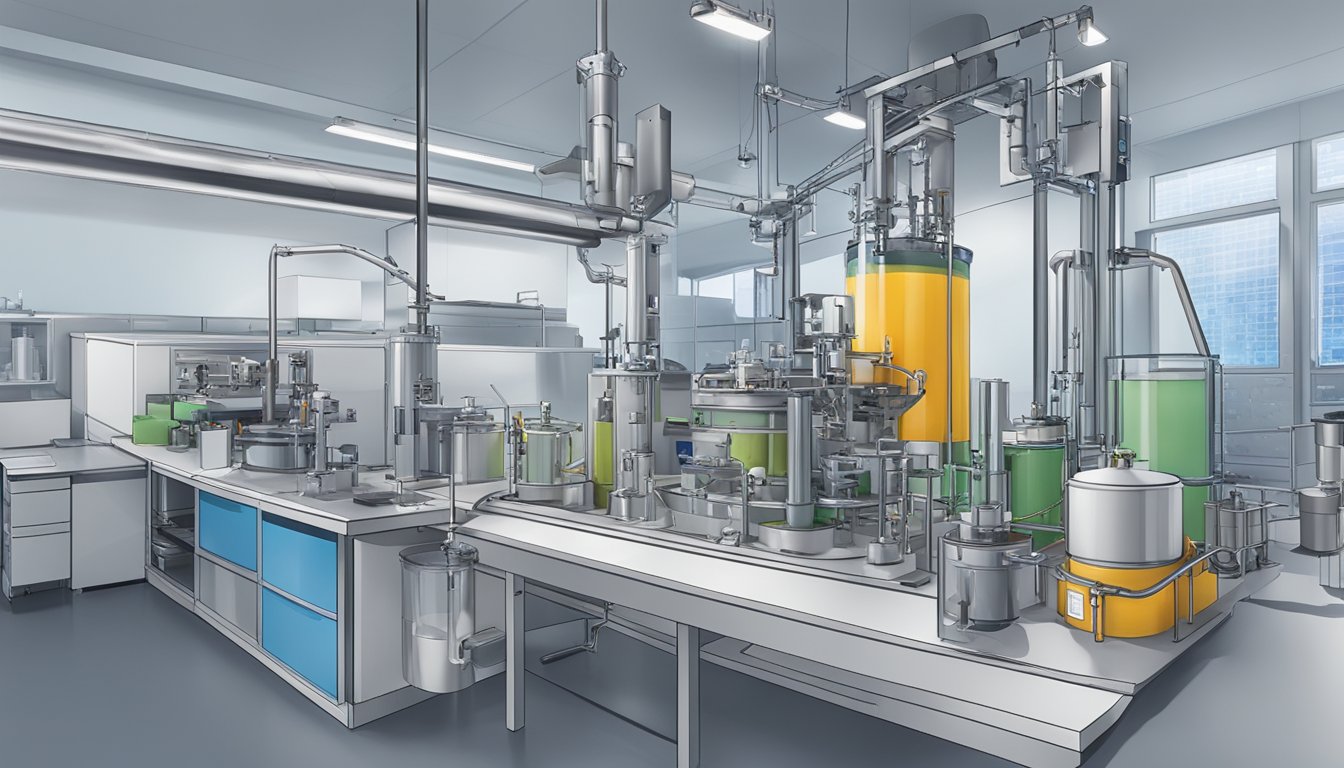MBTS Rubber: Properties, Uses, and Benefits
19/01/2024
MBTS rubber is a widely used rubber accelerator that plays a crucial role in the production of rubber products. MBTS stands for 2,2′-Dibenzothiazole Disulfide, and it is a general-purpose accelerator for sulfur cures. It is very active above 142°C (287°F) and is a non-staining primary thiazole accelerator for use in natural and synthetic rubbers.

MBTS rubber is used in tire manufacturing, shoe soles, and other rubber products. It is used in combination with one or more accelerators and an activator system comprising zinc oxide and a fatty acid (normally stearic acid). The most popular accelerators are delayed-action sulfenamides, thiazoles, thiuram sulfides, dithiocarbamates, and guanidines. MBTS is used as a secondary accelerator in combination with other accelerators to improve the speed of vulcanization and the properties of the vulcanizate.
Key Takeaways
- MBTS rubber is a widely used rubber accelerator that plays a crucial role in the production of rubber products.
- MBTS rubber is used in tire manufacturing, shoe soles, and other rubber products.
- MBTS is used as a secondary accelerator in combination with other accelerators to improve the speed of vulcanization and the properties of the vulcanizate.
MBTS Rubber Overview

Chemical Composition
MBTS (2,2′-Dibenzothiazole Disulfide) is a sulfur-based organic compound with the chemical formula C14H8N2S4. It is a yellowish powder, soluble in benzene, chloroform, and carbon disulfide, and almost insoluble in water. MBTS is a member of the benzothiazole family of chemicals, and it is commonly used as a rubber accelerator.
Properties and Characteristics
MBTS is a versatile accelerator that can be used in a wide range of rubber products. It can be used alone or in combination with other accelerators, such as thiazoles, thiurams, and sulfenamides. MBTS is particularly effective in the vulcanization of natural rubber and synthetic rubbers, such as SBR, NBR, and EPDM.
MBTS has a number of desirable properties, including fast curing speed, high curing activity, good scorch safety, and excellent aging resistance. It is also relatively non-toxic, making it a popular choice for use in food contact applications.
However, MBTS does have some limitations. For example, it can cause discoloration in certain rubber compounds, and it may not be suitable for use in applications that require high levels of heat resistance. Additionally, MBTS can be sensitive to over-curing, which can lead to decreased physical properties in the finished product.
Overall, MBTS is a widely used rubber accelerator with a number of desirable properties. Its versatility and effectiveness make it a popular choice for use in a variety of rubber products.
Production Process

MBTS rubber is produced through a series of steps that involve the acquisition of raw materials, mixing and compounding, shaping, and vulcanization. This section will provide an overview of each of these steps.
Raw Material Acquisition
The first step in the production of MBTS rubber is the acquisition of the raw materials. Raw materials used in the production of MBTS rubber include 2-mercaptobenzothiazole (MBT), sulfur, and zinc oxide. These raw materials are acquired from reputable suppliers to ensure that they meet the required quality standards.
Mixing and Compounding
Once the raw materials have been acquired, they are mixed and compounded in a process that involves the use of specialized equipment. The mixing process involves the use of a Banbury mixer, which is a machine that is used to mix and compound rubber. The Banbury mixer is used to mix the raw materials at high temperatures and pressures to ensure that they are well blended.
Shaping and Vulcanization
After the mixing and compounding process, the resulting compound is shaped into the desired form. The shaping process involves the use of specialized equipment such as extruders and presses. The shaped rubber is then subjected to vulcanization, which is a process that involves the use of heat and pressure to enhance the properties of the rubber.
In summary, the production of MBTS rubber involves the acquisition of raw materials, mixing and compounding, shaping, and vulcanization. Each of these steps is critical in ensuring that the final product meets the required quality standards.
Applications of MBTS Rubber

MBTS rubber accelerator is a versatile chemical compound that finds extensive use in the manufacturing of rubber products. It is widely used in the tire manufacturing industry, as well as in the production of industrial products and consumer goods.
Tire Manufacturing
MBTS is a popular accelerator for tire manufacturing. It is used to enhance the vulcanization process, improving tire durability, tread wear resistance, and overall performance. MBTS is often used in combination with other accelerators, such as TMTD, to achieve optimal results.
Industrial Products
MBTS is also used in the production of a wide range of industrial products. It is commonly used in the manufacturing of conveyor belts, hoses, seals, and other rubber products. MBTS helps to improve the strength, durability, and flexibility of these products, making them more resistant to wear and tear.
Consumer Goods
MBTS is also used in the production of a variety of consumer goods. It is used to manufacture rubber products such as shoe soles, rubber bands, and gloves. MBTS helps to improve the strength and flexibility of these products, making them more comfortable and durable for everyday use.
In summary, MBTS rubber accelerator is a versatile chemical compound that finds extensive use in the manufacturing of rubber products. It is commonly used in the tire manufacturing industry, as well as in the production of industrial products and consumer goods. MBTS helps to improve the strength, durability, and flexibility of these products, making them more resistant to wear and tear.
Market Trends
Demand Analysis
The global Rubber Accelerator MBTS(DM) market is expected to experience steady growth in the coming years. According to a report by QY Research, the market size is expected to reach US$ million by 2029, growing at a CAGR of % from 2023 to 2029. The market is mainly driven by the significant applications of Rubber Accelerator MBTS(DM) in various end-use industries. The expanding demands from the Automotive, Industrial, Consumer Goods and Other, are propelling Rubber Accelerator MBTS(DM) market.
The growth of the rubber accelerator market can be attributed to the increasing demand for automotive and industrial tires, and rising demand for Medical Gloves. As per a report by DataIntelo, the global Rubber Accelerator Market size is projected to grow from USD 1.06 Billion in 2018 to USD X.XX Billion by 2028, at a CAGR of 4.4% from 2018 to 2028.
Supply Chain Dynamics
The supply chain of the rubber accelerator market is complex and involves several stages. The primary raw materials used in the production of rubber accelerators are sulfur, benzothiazole, and other chemicals. The production of rubber accelerators involves several stages, including synthesis, purification, and packaging. The final product is then transported to various end-use industries.
The key players in the rubber accelerator market include AkzoNobel, Eastman Chemical Company, Lanxess, Solvay, and Sumitomo Chemical Co. Ltd. These companies have a significant presence in the global market and are focused on expanding their product portfolio to meet the growing demands of end-use industries. The market is highly competitive, and companies are adopting various strategies such as mergers and acquisitions, partnerships, and collaborations to gain a competitive edge.
Environmental and Health Considerations
Regulatory Compliance
MBTS rubber accelerators are regulated by various government agencies worldwide. In the United States, the Environmental Protection Agency (EPA) has classified MBTS as a hazardous substance under the Clean Air Act. The European Chemicals Agency (ECHA) also regulates the use of MBTS under the Registration, Evaluation, Authorization and Restriction of Chemicals (REACH) regulation. It is important for manufacturers and users of MBTS to comply with these regulations to ensure the safety of workers and the environment.
Recycling and Disposal
MBTS rubber accelerators are commonly used in the production of rubber products. When these products reach the end of their useful life, they must be disposed of properly to prevent harm to the environment. Recycling is an effective way to reduce waste and conserve resources. However, not all rubber products can be recycled due to the presence of MBTS and other chemicals. In such cases, the products must be disposed of in accordance with local regulations.
In conclusion, MBTS rubber accelerators play a crucial role in the production of rubber products. However, it is important to consider the environmental and health implications of their use. Manufacturers and users of MBTS must comply with regulatory requirements and take appropriate measures for recycling and disposal.
Future Developments
Technological Advancements
The rubber industry is continuously evolving and developing new technologies to improve the quality and performance of rubber products. In the case of MBTS rubber, there are ongoing efforts to improve the efficiency of the production process and reduce costs. One such development is the use of nanotechnology to enhance the properties of MBTS rubber. By incorporating nanoparticles into the rubber matrix, it is possible to improve its mechanical, thermal, and electrical properties, making it more versatile and durable.
Another area of research is the development of new catalysts to replace the traditional sulfur-based systems used in the vulcanization process. These new catalysts are expected to offer several advantages over the existing systems, including reduced curing times, improved mechanical properties, and reduced environmental impact.
Emerging Markets
The demand for rubber products is growing rapidly in emerging markets such as China, India, and Brazil, driven by the expansion of the automotive and construction industries. As a result, there is a growing need for high-quality rubber accelerators such as MBTS to meet this demand. To capitalize on this opportunity, several major players in the rubber industry are expanding their operations in these markets, investing in new production facilities and research and development centers.
In addition, there is a trend towards the development of eco-friendly rubber products, which has led to the emergence of new markets for MBTS rubber. These products are designed to be biodegradable and recyclable, reducing their impact on the environment. As a result, there is a growing demand for eco-friendly rubber accelerators such as MBTS, which can be used to produce these products.
Overall, the future of MBTS rubber looks promising, with ongoing research and development efforts focused on improving its performance and reducing its environmental impact. As emerging markets continue to grow and demand for high-quality rubber products increases, the demand for MBTS is expected to remain strong.




